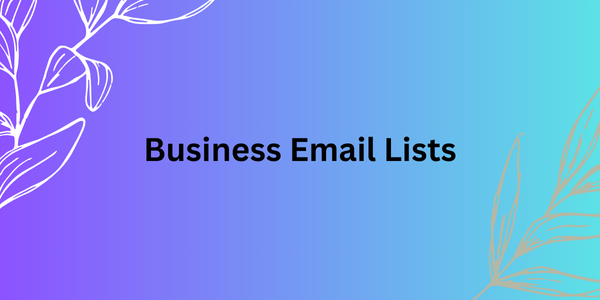|
|
This will be of great help in retaining good email engagement rates, enhancement in deliverability, and assurance that you mail an audience that's receptive. Sometimes, subscribers stop opening or engaging with your emails over time; such records lower your sender reputation and may further get your emails marked as spam. Cleaning your email list is an art that can effectively be done through a number of steps so that your email list remains healthy and active. First, identify inactive subscribers.
First, you need to understand what "inactive" is. Generally speaking, an inactive subscriber is one who has not opened or clicked on any of your emails in a certain length of time. For most businesses, it is six months of inactivity, but for some, it could be three months or up to one year. Using your email marketing platform, identify which of your subscribers have not opened, clicked on, or responded to your emails within your defined period.
2. Segment Your List
Once you have identified your inactive subscribers, segment them into a list. Most email marketing tools will easily segment the audience based on their activity. This will allow you to mount re-engagement campaigns targeted at the inactive subscribers before making your final decision to remove them.
3. Run a Re-engagement Campaign
Before removing those who aren't active, give them one final chance to stay in your list by running a re-engagement campaign. If properly designed, a re-engagement email can be surprisingly effective. Here's how to do it:
Friendly Reminder Send subscribers a note regarding how they Australian Beauty Industry Email List got subscribed and about the kind of content they should expect from you. You can also give them an incentive such as a discount or some free resource as a way of making them get back on track.
Preference Update Offer: Provide subscribers with the opportunity to update their email preferences, which can include the frequency of your emails. Others may feel overwhelmed by the number of emails you send, and reducing the frequency might keep them in your list.
Subject Line Experimentation: You can use catchy subject lines like "We Miss You" or "Still Interested?" to capture attention.
If subscribers open your emails or click on this campaign, move them to your active list. Those who haven't should move to the next step.
4. Remove Hard Bounces
A hard bounce is when an email cannot be delivered due to permanent reasons, such as the email address being invalid or non-existing. These should be removed from your list right away since they will only build up and contribute to poor email deliverability. Most email marketing platforms will flag or remove hard bounces automatically; however, you need to review your reports periodically to catch any that might have fallen through the cracks.

5. Scrub Soft Bounces After Numerous Attempts
Soft bounces are temporary issues like a full inbox or server error. While a soft bounce is not an indicator of an inactive subscriber, if a message continues to bounce after several tries, it is best to scrub these addresses. Consider scrubbing any email address that has soft bounced multiple times over a set period, say five back-to-back campaigns.
6. Regular Verification of Email Address
Using an email verification tool will go a long way in cleaning up your list from the very beginning. These tools verify that the grammar of the email address is correct and it's safe to send to, hence avoiding deliverability issues and reducing the chances of bounces. It's necessary to remove inactive or incorrect addresses from your list by regularly verifying email addresses.
7. Watch Out for Spam Complaints and Unsubscribes
If subscribers flag your emails as spam or unsubscribe, you have to take certain actions. Most email marketing services do this automatically and remove those addresses from your list. It is, however, still good practice to look into the spam complaint rates from time to time and unsubscribes to ensure quality recipients of your emails.
8. Automate List Cleaning
Many of the email marketing tools provide automatic cleaning features in their packages, such as removing hard bounces, processing un-subscribers, and even flagging inactive users. If your platform offers these, turn the automation features on so that it saves you a lot of time and keeps your list clean without too much regular manual interference.
9. Establish a Regular Cleaning Schedule
Finally, establish the practice of washing your list on a periodic basis. This could be every three to six months, depending upon the regularity with which you send mailings to your list. Ongoing cleaning will help ensure that your email list is healthy and active, and that it will perform for you. In turn, it will increase your performance about email marketing and reduce your risk of being flagged by the spam filters.
Conclusion
Cleaning your list helps in ensuring that emails go to people who want to hear from you. You will be able to remove subscribers who are inactive, create re-engagement campaigns, and always verify and delete invalid addresses. Automated tools will make it easy, but keeping a proactive approach toward cleaning your list will ensure the continuity with high open and click-through rates while minimizing the bounces and spam complaints. Clean lists mean better deliverability, higher engagement, and thus a much better strategy in executing email marketing.
|
|